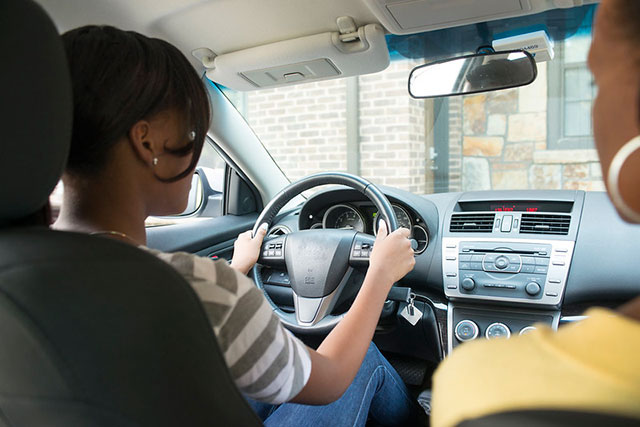As a parent, one of the biggest and most daunting responsibilities you can teach your teenager is how to drive. The thought of your child getting behind the wheel of a car can be scary, but with proper guidance, they can learn to become a responsible driver.
Table of Contents
Teaching Your Teen Safe Driving

Keep reading to learn essential tips and strategies that you can use to teach your teen safe driving.
Understanding the Importance of Safe Driving
Make sure that your child is mentally and emotionally prepared before you start driving lessons. Your teen should take the responsibility of learning to drive seriously. If they are dismissive of your safety reminders, they may not be ready yet. Encourage your teen to take responsibility for their actions while driving. They should understand that driving is a privilege and not a right. You should also make sure that your teen is familiar with the rules of the road, such as what different signs and road markings mean.
Before getting behind the wheel, it’s also important that your teen understands the consequences of unsafe driving. Car accidents are one of the leading causes of injury and death in the United States for people under 55 years old. As a parent, you should explain to your teen how important it is to be a safe and responsible driver, and what the consequences are of driving recklessly.
1. Becoming Familiar With the Vehicle
Before the car is even turned on, it’s important to get familiar with the car itself. With your teen in the driver seat, review everything in front of them. This includes things like how to use turn signals, adjust the mirrors, change the windshield wiper speed, and open the gas tank. On the dashboard, it’s important to point out the speedometer, the gas tank indicator, and all other important symbols and dials. You can use your car’s manual to explain various warning lights that may appear and what they mean.
This is a good time to remind your teen that seatbelts are a must, and they should never begin driving until everyone in the car including themself is buckled up, across both the lap and chest.
2. Start with the Basics
In a safe isolated place like an empty parking lot, begin with the basics such as how to turn the car on and off, which pedal is the gas and which is the brake, and how to change gears. Then you can proceed with teaching your teen how to accelerate and brake smoothly, and how to turn the car safely. Make sure they know the importance of checking blind spots.
3. Prepare Them For Different Driving Scenarios
It’s important for your teen to be aware of their surroundings and know how to anticipate potential hazards. Teach them the importance of leaving space between vehicles and how to use the three second rule. Explain that they should never tailgate because if the car in front of them suddenly stops, they won’t be able to stop in time.
Once they get more comfortable behind the wheel, expose your teen to different driving situations like driving on the highway, in heavy traffic, and at night. Make sure they understand the rules for driving in different weather conditions, such as rain or snow. For example, in some states, you are required to use headlights in rainy weather.
As your teen becomes more comfortable with driving, it’s time to introduce additional skills that they will need. Parallel parking, three point turns, and U-turns are important maneuvers to learn.
4. Emergencies, Laws, and Safety Tips
Prepare your teen to handle emergency situations such as a flat tire or an engine failure. In these situations they should find a safe place to pull over and call for help if needed. If your family has a AAA membership, provide them with the card of emergency phone numbers.
It’s crucial that you teach your teen the importance of avoiding distractions while driving. This includes texting, using social media, and eating while driving. This is also a great time to instill the extreme dangers of drunk driving. Not only is drunk driving illegal in all states, but it greatly increases the chances of getting into a serious crash.
The importance of following traffic laws cannot be overstated. This includes following speed limits, stop signs, and always wearing a seatbelt. When they first get their license, they will likely not be allowed to drive friends, depending on the state you live in. Having other passengers can be incredibly distracting to new drivers.
Stay Involved For Continuous Improvement
Even after your teen has passed their driving test, it’s important to stay involved in their driving habits. Continue to give them guidance and feedback, and encourage them to take additional driving courses to improve their skills. Consider enrolling them in a driver’s education course or taking them to a defensive driving class. You can also find online resources, such as videos and articles, that provide helpful tips and advice.
Teaching Responsible Car Ownership
Learning to drive goes beyond actually driving – it also includes becoming a responsible car owner, or car borrower if your teen doesn’t have their own car yet. This includes how to know when the car needs maintenance, what to do in the case of an accident, and how car insurance works. It’s important that they understand not only the responsibility of safety they’re taking on, but also the financial responsibility and risk.
Final Thoughts
Teaching your teen safe driving is a critical responsibility that requires patience, guidance, and attention to detail. By following the tips and strategies outlined in this article, you can help your teen become a safe and responsible driver.
Some of the common mistakes you should avoid include yelling or becoming overly critical, not allowing your teen to make mistakes and learn from them, and not providing enough practice time. Driving is a skill that takes time and practice.
In the unfortunate case that your teen gets injured in an accident, help them out by seeking legal help for the car accident. This would be an incredibly scary situation for a new driver, and a car accident lawyer will be able to recover compensation for your teen’s injury while you help them heal physically and mentally.
Be a good role model for your teen by practicing safe driving habits yourself. Follow traffic laws, wear your seatbelt, and avoid distracted driving.













